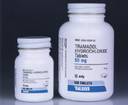|
Ine acts on receptors in the muscles that dilate the pupil. This causes the muscle to contract, resulting in the pupil dilating. Phenylephrine also acts on receptors in the blood vessels of the eye. This causes the blood vessels to narrow which results in decreased blood flow to the eye. By decreasing the amount of blood flowing through the vessels of the eye, there is a reduction in the appearance of redness. Phenylephrine may be used with atropine to relax the eye muscles that inflame and over-contract in conditions such as uveitus. Phenylephrine is given as eye drops so that it may act directly where it is required. This decreases the likelihood of side effects in other parts of the body. In certain circumstances a small amount may be absorbed, giving rise to side effects such as raised blood pressure or other cardiovascular effects. Irises that are dark in colour require larger doses of eye drops as they do not dilate as easily in response to this medication. What is it used for? I
phenylephrine hydrochloride Gle glaucoma Known sensitivity or allergy to any ingredient This medicine should not be used if you are allergic to one or any of its ingredients. Please inform your doctor or pharmacist if you have previously experienced such an allergy. If you feel you have experienced an allergic reaction phenylephrine hydrochloride, stop using this medicine and inform your doctor or pharmacist immediately. Pregnancy and Breastfeeding Certain medicines should not be used during pregnancy or breastfeeding. However phenylephrine hydrochloride, other medicines may be safely used in pregnancy or breastfeeding providing the benefits to the mother outweigh the risks to the unborn baby. Always inform your doctor if you are pregnant o phenylephrine hydrochloride.
phenylephrine hydrochloride R planning a pregnancy phenylephrine hydrochloride, before using any medicine. The safety of this medicine during pregnancy has not been established. Seek medical advice from your doctor. There is no information available regarding the safety of this medicine during breastfeeding. Seek medical advice from your doctor. Side effects Medicines and their possible side effects can affect individual people in different ways. The following are some of the side effects that are known to be associated with this medicine. Because a side effect is stated here phenylephrine hydrochloride, it does not mean that all people using this medicine will experience that or any side effect. Dislike of light (photophobia) Abnormal heart beats (arrhythmias) Stinging and blurring of vision High blood pressure (hypertension) Chest pain (angina pectoris) The side effects listed above may not include all of the side effects reported by the drug's manufacturer. For more information about any other possible risks associated with this medicine phenylephrine hydrochloride, please read the information provided with the medicine or consult your doctor or pharmacist. How can this medicine affect other medicines? There may be some absorption of phenylephrine from the eye into the bloodstream. If phenylephrine eye drops are used together with the following medicines there may be an increase in blood pressure: mono-amine oxidase in.
phenylephrine hydrochloride beats (arrhythmias) Stinging and blurring of vision High blood pressure (hypertension) Chest pain (angina pectoris) The side effects listed above may not include all of the side effects reported by the drug's manufacturer. For more information about any other possible risks associated with this medicine phenylephrine hydrochloride, please read the information provided with the medicine or consult your doctor or pharmacist. How can this medicine affect other medicines? There may be some absorption of phenylephrine from the eye into the bloodstream. If phenylephrine eye drops are used together with the following medicines there may be an increase in blood pressure: mono-amine oxidase inh.
phenylephrine hydrochloride 
phenylephrine hydrochloride | Compose t68i ringtones
| Polyphonic ringtone converter | Hip hop ringtones
| Free ringtones for verizon customers
| Cheapest ultram
| phenylephrine hydrochloride
2% concentrations. It suffers some rebound congestion effects, although to a lesser degree than oxymetazoline. Mydriatic Phenylephrine is used as an eye drop to dilate the pupil to facilitate visualization of the retina. It is often used in combination with tropicamide. Narrow angle glaucoma is a contraindication to phenylephrine use. Vasopressor Phenylephrine is rarely used as a vasopressor to increase the blood pressure in unstable patients with hypotension. Such use is more common in anesthesia practices; phenylephrine is especially useful in counteracting the hypotensive effect of epidural and subarachnoid anesthetics. Side effects The primary side effect of phenylephrine is hypertension. Patients with congestion and hypertension are typically advised to avoid phenylephrine containing products. Pregnancy Phenylephrine is in the FDA pregnancy category C. Legal issues Pseudoephedrine and phenylephrine are both used as decongestants; and until recently, pseudoephedrine was much more c
|


